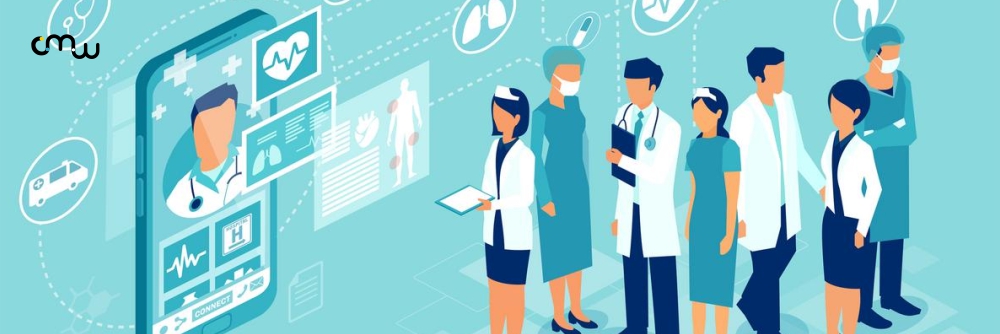Introduction
Healthcare professionals have an obligation to serve their patients well, but they also need to be strategic about how they do it. With so many tools and technologies available, it's easy to get overwhelmed by the sheer number of choices out there. To help guide you through this process, here is a checklist that outlines some of the critical steps you can take towards creating a seamless patient experience:
A new patient's journey begins the moment they discover your practice.
The first step in creating a seamless patient experience is to ensure that every interaction with your practice begins with a positive impression. From the moment they discover your method, patients will form an image of you and your staff based on their interactions with you. This is why it's so important to have an online presence that reflects what's happening offline: if patients can't find information easily or find inconsistencies between what they see online and how things look when they walk through the door (or call), then they may not come back again--and that hurts both marketing efforts and patient retention rates!
To make sure this doesn't happen at all, we recommend taking advantage of tools like Google My Business (GMB) which allows businesses to manage their local listings across different search engines like Bing or Yahoo!. Beyond GMB, though, there are also some other things you should consider doing before someone ever steps foot into one of our offices:
Knowing how to structure your practice website properly is essential to portray the experience patients will receive accurately.
As you're building your practice website, it's essential to make sure it's easy for patients to navigate. This means having clear navigation links and labels that are visible on all devices, including mobile phones and tablets. Your website should also be optimized for search engines so that people can find you when they type in a keyword related to the services or treatment options you offer.
You'll also want to ensure that any content on your site is easily understood by patients who may need more experience with medical terminology or conditions (or even just English!). You might use simple language in some regions of the site where this would be appropriate--for example, if your patient education materials are geared toward younger people who might not understand certain words like "cardiovascular disease" but could grasp "heart attack" without too much trouble.
Encourage patients to share their experiences by making it easy for them to find and follow you across multiple platforms.
The goal is to make it as easy as possible for patients to share their experiences with you. You can do this by making sure they have access to all of the tools they need, including social media accounts, patient experience surveys and online feedback forms.
In order for patients to be able to share their experiences with you on social media channels, your hospital or clinic needs an active presence there--and that means having a dedicated team member who handles these activities in addition to other marketing responsibilities (such as content creation). This person should also be tasked with monitoring what people are saying about your brand online so that he or she can respond quickly when necessary.
Patient experience surveys are another way that healthcare providers can gather feedback from patients about various aspects of their care experience: how well did we communicate our process? Was our staff friendly? Did we address all questions and concerns? These surveys should be distributed at every touchpoint throughout treatment so that everyone gets an opportunity at least once during treatment. Whether it's before surgery or after discharge from rehab, before entering an outpatient clinic visit, or while waiting in the lobby during an appointment...you get where I'm going here!
With so many marketing platforms available to healthcare professionals today, make sure you are taking advantage of the right ones for your practice.
The most important thing to remember when creating your marketing strategy is that it should be tailored to the needs of your practice. With so many marketing platforms available to healthcare professionals today, make sure you are taking advantage of the right ones for your practice.
Social media has become an essential part of any marketing plan since it gives patients to access 24/7 and allows them ample time to gather information before making an appointment or visiting a facility. It also provides healthcare professionals a platform where they can interact with patients directly by responding promptly when asked questions or sharing helpful information about their services (e.g., videos). When using social media channels such as Facebook or Twitter, think about how each post fits within the larger context of patient experience initiatives like MyChartTM at Mayo Clinic Health System (MHCS), which provides personalized care by connecting patients with their physicians through secure messaging tools available 24 hours per day seven days per week via mobile devices including smartphones tablets computers laptops desktops, etc.
Offer patient education materials at each point a patient interacts with your practice - and ensure that those materials are tailored to each patient's individual needs.
When you're trying to create a seamless patient experience, it's essential to make sure the patient education materials are available at each point of contact with your practice. For example, if they come in for an appointment and don't have their medication list with them, you should have some printed-out copies available on-site, so they can fill out this form before seeing the doctor.
Similarly, if there's a question about insurance coverage or billing information (especially during pre-operative visits), having these answers readily available will help eliminate any confusion or frustration and reduce wait times in line at reception desks.
In addition to making sure these resources are easily accessible within your office buildings themselves - whether via printed documents or digital versions - consider offering them online as well so that patients can access them from home if need be.
Making the most of your resources and partnerships will allow you to focus on what's most important - providing exceptional care for your patients.
As a healthcare provider, making the most of your resources and partnerships will allow you to focus on what's most important - providing exceptional care for your patients.
- Make sure you are taking advantage of the right marketing platforms.
- Make sure you are using the right resources and partnerships.
- Focus on providing exceptional care for your patients
Make sure you are taking advantage of the right marketing platforms. Make sure you are using the right resources and partnerships. Focus on providing exceptional care for your patients.
Conclusion
By leveraging the right resources and building strong relationships, you can create a seamless experience for your patients. This starts with knowing how to structure your practice website so that it accurately portrays what patients will receive at every touch point along their journey. Next, encourage them to share their experiences so they feel more confident in choosing you over other providers in town. Then, make sure you're taking advantage of all the marketing platforms available today - ensuring they are tailored to each patient's individual needs and preferences. Finally, offer patient education materials at each point where they interact with your practice - whether it be online or in person!









